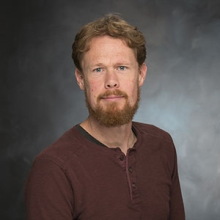-
Title
Staff Scientist/Research Scientist, Isotope Hydrology -
Email
visser3@llnl.gov -
Phone
(925) 423-0956 -
Organization
Not Available
Research Interests
My research is focused on understanding the sustainability of water resources (both availability and quality) in the context of climate change adaptation and resilience. In my research I combine advanced isotopic tracers with numerical models to provide new perspectives to research questions in terrestrial hydrology and biogeochemistry.
My expertise is understanding reactive transport along groundwater flow paths in relation to groundwater ages and understanding the dynamic behavior of watersheds to rapidly mobilize older water from subsurface storage into streamflow. These aspects of the terrestrial hydro-bio-geo-chemical cycle have important implications for surface water quality and riverine exports of nutrients to coastal ecosystems.
My group at LLNL has developed new capabilities for utilizing isotopic tracers in hydrological research and applied these tracers to urgent water resource questions in California. Building on the unique facilities of the Nuclear and Chemical Sciences Division, we can use a suite of isotopes to investigate sources, pathways, and travel times of water. Our suite of naturally occurring isotopic tracers includes sulfur-35 (87 day half-live), sodium-22 (2.6 year half-life), tritium (12.3 year half-life), tritium-helium groundwater dating, dissolved noble gas analyses for reconstructing recharge conditions, and stable isotope analyses of water and nitrate for identifying water sources and understanding nitrogen cycling in soils and groundwater.
I received my PhD from Utrecht University (The Netherlands) in 2009 for demonstrating trends in groundwater quality in relation to groundwater age and modeling reactive solute transport in groundwater at the groundwater basin scale. After one year at the Netherlands Geological Survey and the research institute Deltares, I joined LLNL as a postdoc in 2010. I now manage the environmental Noble Gas Mass Spectrometry laboratory in the Nuclear and Chemical Sciences Division.
Google scholar: https://scholar.google.com/citations?user=S7EqtdMAAAAJ
Publons: https://publons.com/researcher/2712445/ate-visser/
More information about water science and isotope hydrology at LLNL
Activities
- AGU Fall Meeting Primary Session Convener: Hydrochronology: Advances in Tracer Methods and Modeling of Residence Times in Hydrology (2015, 2016, 2017, 2018, 2019).
- Review Editor for "Frontiers in Water | Water and Critical Zone"
- Member of three Research Advisory Sub-Committees of the California Department of Water Resources for Flood-MAR (Managed Aquifer Recharge).
- Guest Editor for "Water": Isotopic Methods in Water Resources Research (Special Issue)
- Associate Editor for Hydrogeology Journal (2011–2013)
Ph.D., Physical Geography, Utrecht University, the Netherlands, 2009
M.S., Physical Geography, University of Amsterdam, the Netherlands, 2004
Grande, Emilio, Ate Visser, Pamela Beitz, and Jean Moran. (2019) Examination of Nutrient Sources and Transport in a Catchment with an Audubon Certified Golf Course. Water, 11(9): 1923. doi: 10.3390/w11091923
Visser, Ate, Melissa Thaw, Amanda Deinhart, Richard Bibby, Safeeq Khan, Martha Conklin, Brad Esser, and Ype van Der Velde. (2019) Cosmogenic Isotopes Unravel the Hydrochronology and Water Storage Dynamics of the Southern Sierra Critical Zone. Water Resources Research, 55: 1429-1450. doi: 10.1029/2018WR023665
Veale, Nate, Ate Visser, Brad Esser, Michael Singleton, and Jean Moran. (2019) Nitrogen Cycle Dynamics Revealed Through δ18O-NO3- Analysis in California Groundwater. Geosciences, 9(2): 95. doi: 10.3390/geosciences9020095
Rozemeijer, Joachim, Ate Visser, Wiebe Borren, Meidan Winegram, Ype van Der Velde, Janneke Klein, and Hans Peter Broers. (2016) High-frequency monitoring of water fluxes and nutrient loads to assess the effects of controlled drainage on water storage and nutrient transport. Hydrol. Earth Syst. Sci., 20(1): 347-358.doi: 10.5194/hess-20-347-2016
Avery, Elizabeth, Richard Bibby, Ate Visser, Brad Esser, and Jean Moran. (2018) Quantification of Groundwater Discharge in a Subalpine Stream Using Radon-222. Water,10 (2), 100. doi: 10.3390/w10020100
Harms, Patrick, Ate Visser, Jean Moran, and Brad Esser. (2016) Distribution of tritium in precipitation and surface water in California. Journal of Hydrology, 534, 63–72. doi: 10.1016/j.jhydrol.2015.12.046.
Peters, Elizabeth, Ate Visser, Brad Esser, and Jean Moran. (2018) Tracers Reveal Recharge Elevations, Groundwater Flow Paths and Travel Times on Mount Shasta, California. Water, 10 (2), 97. doi: 10.3390/w10020097
Segal, Daniel, Jean Moran, Ate Visser, Michael Singleton, and Brad Esser. (2014) Seasonal variation of high elevation groundwater recharge as indicator of climate response. Journal of Hydrology, 519, Part D (0), 3129–3141. doi: 10.1016/j.jhydrol.2014.10.051.
Visser, Ate, Jean Moran, Michael Singleton, and Brad Esser. (2018) Importance of river water recharge to the San Joaquin Valley groundwater system. Hydrological Processes. doi: 10.1002/hyp.11468.
Visser, Ate, Hans Peter Broers, Ruth Heerdink, and Marc Bierkens. (2009) Trends in pollutant concentrations in relation to time of recharge and reactive transport at the groundwater body scale. Journal of Hydrology, 369(3-4): 427-439. doi: 10.1016/j.jhydrol.2009.02.008
Visser, Ate, Hans Peter Broers, Bas van der Grift, and Marc Bierkens. (2007) Demonstrating trend reversal of groundwater quality in relation to time of recharge determined by 3H/3He. Environmental Pollution, 148(3), pp.797-807. doi: 10.1016/j.envpol.2007.01.027


